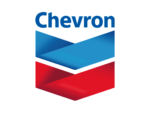In today’s episode, we’re going to have a blast unpacking the treasure trove of strategies that’ll skyrocket your content creation skills. I’m here to walk you through it all as your guide, your confidant—heck, as your content creation comrade.
By hanging with me today, you’re going to get a load of practical, actionable insights.
We’ll examine fine-tuning your marketing with hard-hitting content so you can learn the art of the pivot. That way you can adapt to what’s actually winning over customers, or even discovering the gold mine that is an ‘idea content bucket’—I’ll cover it all. This is what I personally use and I’m going to share it with you.
Together, we’ll unravel the mysteries of leveraging AI tools and let you know some specific, real-world AI tools I am many others are using.
You’ll also get some specific tools to see how you can reach your audience, expand it, and leverage the daylights out of these fabulous AI tools.
Kick back, but stay sharp, because today is about conversation, laughter, and, most of all, getting serious results for your business. We’re all about sharing ideas here, so don’t be shy to drop your two cents into the mix. It’s through our shared stories and strategies that we grow and conquer.
So, buckle up, dear friend. You’re about to fill your content creation arsenal with ideas that will not only build, but will blast your business into a whole new stratosphere of success. Let’s get started!
First, here’s a gift for you to better understand AI, create content, and build sales –
http://AItools4biz.com
Here’s Your Video Link:
Listen to this & other episodes on our podcast
https://bit.ly/sre_podcast
For your convenience, here’s a Spanish language summary (unedited)
En este episodio de “Stark Raving Entrepreneurs” titulado “Cómo obtener ideas para la creación de contenido”, Terry Brock, experto en creación de contenido y marketing, comparte consejos y estrategias para los empresarios que desean sobresalir en el mundo del contenido digital. Terry insiste en la importancia de investigar y experimentar con diferentes tipos de contenido para ver qué resuena mejor con el público. Recomienda utilizar herramientas como Google Docs para organizar ideas y emplear la inteligencia artificial para generar borradores y títulos de contenido.
Además, Terry enfatiza la importancia de consumir una amplia gama de información, desde libros hasta podcasts y artículos en línea, para alimentar la mente con ideas que se puedan adaptar a las necesidades de la audiencia. También sugiere asistir a eventos en persona para aprender de expertos y colegas. Finalmente, aboga por la iteración y la edición minuciosa del contenido antes de su publicación, utilizando múltiples revisiones para mejorar y refinar el material.
Terry aporta ejemplos prácticos de herramientas útiles en este proceso, como ChatGPT, Perplexity y Claude de OpenAI, así como plataformas para obtener retroalimentación y validar ideas, como TubeBuddy. Al final del episodio, invita a los oyentes a participar, compartir sus propias experiencias y suscribirse al podcast para más contenido útil y estrategias relacionadas con el marketing y la creación de contenido.
And, for your convenience, here’s an unedited transcript. Please let us know what you think of this.
Terry Brock -Recording [00:00:00]:
One of the best ways to market your firm, to market your entrepreneur business is by being a content creator. What you’re doing there is you are creating content, audio, video, pictures, all kinds of information that people need. Maybe it’s a blog, and you give them something that’s gonna solve their problem. It gives a solution using each unique medium and the benefits that it has. We’ve talked about that before in earlier videos, and in this second of a series about how you can become a better content creator with the right tools, the right principles, the right policies and practices, you’re gonna be able to do well. I’m Terry Brock. I’ve been doing this for a long time, actually since I was in 2nd grade. It was a long time.
Terry Brock -Recording [00:00:41]:
I’ve been in undergrad degree with radio, TV, and newspaper. I worked in newspapers. I worked actually covered Richard Nixon’s inauguration, a paper I was working for when I was 16 years old. I did. You know, it gives you an idea of how old I am. I’m doing that back. I was 16 years old, went to Washington, but I’ve learned some things about how to do this and what to do, and I wanna share that with you. I’m gonna start by looking at something that I thought was particularly good.
Terry Brock -Recording [00:01:04]:
An article that I saw written by someone named looks like Katie French, 5 ways a content creation strategy transforms your marketing. And this was in a publication called column 5. I really like what she said, but I particularly wanna bounce down here to number 3, a point that she made that I think is particularly good that applies to you and me. You can identify what’s working and refine as you go. She says the reality is you can’t always predict what will be most successful, and content marketing requires a fair amount of experimenting, tweaking, testing testing and tweaking and refining. A strategy is crucial to help you outline your goals, identify KPIs, those key performance indicators, and to track related metrics to help you gain, insight and whether or not your efforts are really working. If they’re not, you can correct course without sinking a ton of time or resources, that’s money, into ineffective content campaigns. Remember too, that a good content strategy provides a basic framework as well as the flexibility to tweak things as you go.
Terry Brock -Recording [00:02:14]:
And here’s a tip. If you want to, they can give you some information there on the metrics of how to do that. But I think what they’re covering here and what she says makes all the sense in the world. When you’re doing content creation, it’s a great way to do market research. People in research have done a lot of testing through the years, and we still need to do that. Matter of fact, I was just talking to Gina Carr, my partner and my fiancee. We work together for start creating entrepreneurs, and we were talking about doing a survey. That we need to send out a survey, and I think that’s a really good idea.
Terry Brock -Recording [00:02:43]:
But I also reminded some of the studies we’ve seen where people will be in a group, and they say, okay, do you want the yellow widget or do you want the blue widget? And people say, oh, yeah. We want the yellow widget. That’s the one we want. They That’s the one we want. They check that off on their thing. People can come back. Marketers go see. The survey says they want the yellow widget.
Terry Brock -Recording [00:03:00]:
But then what happens in the real world is different, particularly when you put money into it. So for example, I remember a study hearing about before they said, okay. You want blue or yellow widgets? Whatever it was they were doing a real product. They said, each of them cost $20. Here is a $20 bill for each of you to use and you can buy it right here on your way out. And then, they watched what the people actually did. And the people bought more of the blue widget than the yellow widget. Even though in the survey, they said yellow.
Terry Brock -Recording [00:03:30]:
Because when you get into the real world, things can change. Hey. It looks like everybody’s buying the blue widget. I thought the yellow okay. Well, I better do it because everyone else is doing this. That’s the way human beings operate. Sometimes they’ll get there and go, oh, I didn’t care for that yellow widget because it’s got this on it or it did doesn’t have that thing, but the blue widget does. I’ll go with that.
Terry Brock -Recording [00:03:49]:
What you wanna do, bottom line, do your research and find out what’s going on and what people are really doing. And that’s where I’m gonna have to agree with Katie French in the article that I just read. That one piece of it. She’s right. You want to really monitor what people are doing, what they say, what they actually do, and you do that with lots of little iterations and tests. One of the best things you can do is send out a lot more content and watch what people click on. Where are they investing their ultimate resource time? Are they doing this to say, alright. We want this thing right here, but we don’t want this one.
Terry Brock -Recording [00:04:23]:
Or what are they actually doing? Use that. Watch how many podcasts you have. How many video views you have. How many open rates are there on the blog that you put on this particular text information. Which pictures did they like. All of that can be tested in a beautiful way with today’s technology. I saw another article that I wanna share with you from the good folks over there at HubSpot. I love their material, what they put out about marketing and how they talk about it.
Terry Brock -Recording [00:04:49]:
And this was an article written by looks like Rebecca Reiserpato about 10 benefits of consistent high quality content marketing. I thought she had some very good points, and I wanna share a few of those with you here. Let’s go bounce down here where she says, number 1, your audience will stick around longer. See, great content is an important asset. It has the ability to create positive experiences for your potential customers and compel them to come buy more. It’s your ticket to capturing your audiences audience’s attention and continually reinforcing a positive brand impression. This is really important. When you’ve got that audience around there and you’ve got lots of good content, they want to keep going back.
Terry Brock -Recording [00:05:30]:
Think about your own experience. When you hear somebody who’s got a really good YouTube channel and it solves problems, they show you how to do this. You wanna go back and see them again. Hey, she’s got a new episode out. I wanna go over and watch it. Hey, look what he did on this one. I love what he did on those last three videos. I gotta see this one as well.
Terry Brock -Recording [00:05:47]:
I don’t know about you, but I find there are certain groups of people and people and expertise in certain areas on YouTube, because I love YouTube. Then I’ll go out and I’ll go, hey, I gotta remember this, because if this person’s doing it, he’s good. I’ve seen really good content from him. You’ll have much, much better options and capability there. And I think they make another point here that, is really good. It talks about the kind of possibilities of what you can do and how these happen when you’re a content creator. They say you’ll have better traction on social media. So one thing to it’s one thing to increase your social media followers across channels, but it’s quite another to create trendy content.
Terry Brock -Recording [00:06:26]:
If you’re one of those businesses that doesn’t use much traction despite despite of having a huge following, it’s time to use content marketing to your advantage. I think that’s a good thing. Quality content can help your business gain traction on social media, and I think that’s the key. You wanna get that quality content. Well, how do you come up with those ideas? That’s what I wanna talk with you about here, particularly on this episode, some ideas, and I’d love to hear from you. Please leave a comment below and let me know. Is this something you do, or are you using some other way to come up with content? Well, let me give you a little tip here that’s helped me a lot. Before you even start getting ideas, say, okay.
Terry Brock -Recording [00:07:05]:
I’m gonna get all these great ideas. You’re gonna have where you gonna put them? You gotta have some way to organize it. So I encourage you to get an idea content bucket. It’s a bucket where you’re gonna put all the content. You see some, oh, that’s a good article. Copy it, put it in there. Or you see something over here, and you go, hey, great little graphic. Screenshot of that, pop it in there.
Terry Brock -Recording [00:07:23]:
Or here’s something I heard on a podcast where they were talking about this, and he said this, and she said that. Really good stuff. Okay. Good. Put that in there. Here’s what I use. I use a Google Doc. So I have a Google Doc, nothing real fancy.
Terry Brock -Recording [00:07:36]:
It just says content ideas. And when I get something like, oh, that’s pretty good, plop it in there. There’s a good term, plop. You do are are you plopping today? You know, be sure to that would be a good bumper sticker. Are you plopping today? You wanna put it in there, put in the information where you can get it because here’s what’s gonna happen. I don’t know about you, but sometimes I’m sitting down. It’s time to do the content or create my post, to put it together, and I stare at a white screen and go, what? I don’t know. Well, fortunately, today, there’s a lot of ways we can break past that.
Terry Brock -Recording [00:08:04]:
AI being one of them. Using chat g p t, using perplexity, Claude 3, finding many other tools you can sit and just kind of do a brain dump. I’m looking for an article on this, with that and then with this. I like what, Jake Thomas has done with his creator hooks. He puts in lots of ideas. He’s got a tool right now I’m paying for. I’m a customer of his, and he’s not sponsoring this. But if you want to, Jake, we can work something out here for you.
Terry Brock -Recording [00:08:29]:
But, we can put all this together. I just say I’m thinking about an article on I wanna do it for this, for this target market, etcetera. Just plop it in there. There’s that word again. Plop it in there and then it’ll come out with about 10, 20 different titles that could be useful. And I’ll look at those and go, okay. Well, not that. Oh, this sounds really good.
Terry Brock -Recording [00:08:50]:
So I grab that one and, test it. I’ll put it into TubeBuddy. There’s a keyword explorer that they have. That’s literally what it’s called, keyword explorer. I put that in there and it gives me some ideas on which way to go, how strong it would be, and how I could enhance it a little bit, make it even better. That has worked well for me. I know the rhythms and the algorithms are changing regularly, and what worked before is not necessarily gonna work now or into the future. But I’m finding that can work really well.
Terry Brock -Recording [00:09:18]:
So get that bucket where you can put it. Some people will use evergreen notes. They might use, some other tool. Whatever it is, have a way for you to hold those ideas. Another way that you really wanna do it that I find the best content creators are using regularly, consume a lot of good information, read a lot of books. That’s something that not a lot of people are doing today, and that gives you an advantage. When you can go back and read books I particularly like reading good books that were written by people who are no longer with us. They were written maybe a 100 years ago, maybe 50 years ago, maybe 10 years ago, but there are books that are a little bit older because not everybody’s reading those right now.
Terry Brock -Recording [00:09:56]:
You can get a good idea, and then you twist that around to put it into what you’re doing. We talk about AI a lot. In the work that we do helping clients, we’re working with them to use AI, the right tools for their particular situation, for marketing, for generating content ideas, for writing copy, and then getting that as the first step. You don’t just copy and paste. Uh-uh. Don’t do that. As I like to say, you want to it. You wanna make it you with your ideas, your feelings.
Terry Brock -Recording [00:10:23]:
Put that in there. But read books, listen to podcasts, read lots of good articles, constantly be feeding your mind with new ideas that are relevant to your market. You want that to be relevant so people will look at what you’re writing and go, hey. This is pretty good. Every time she puts something out, it helps me. I mean, I think about articles that I read in The Wall Street Journal. Peggy Noonan has really good articles. I like what she has to say.
Terry Brock -Recording [00:10:47]:
When I see which there we go, Andy Kessler. I like what he does there in the Wall Street Journal. Dan Henniger. I see what these people are doing really good and many others as well. But I like what they’re doing, and it’s like they are writing articles for me that help me solve problems. That’s what you wanna do for your audience. Find ways that you can solve their problems and have that bucket place where you can put it. Of course, one of the best places is what I like to call the University of YouTube.
Terry Brock -Recording [00:11:15]:
Go over to YouTube. It’s not a real university, of course. In case there’s any lawyers out there, they no. No. No. It’s the University of YouTube. I mean that euphemistically, but, yeah, that’s a place to get a lot of good ideas. Going over to podcasts.
Terry Brock -Recording [00:11:27]:
Listen to those. Keep feeding your mind with good information. Make sure that you’re learning from a variety of sources. And also on website. Do some searches through chat g p t, through perplexity, and through Claude. With Perplexity Pro, you get access to Claude, which is, as I’m recording this, call my many to be the number one large language model right now in the world. This is changing rapidly and by this afternoon, it could change. But you wanna have a variety of sources helping you out on that.
Terry Brock -Recording [00:12:00]:
That’s gonna be important. Matter of fact, one of the things that we found out in journalism that we study is you need 3 non corroborating sources before you can accept something. For words, if you get one person said, well, it’s this way and this is what’s working with ookieboobies, And you go, okay. Well, you wouldn’t be you’d be wrong. Just say, this one person said this is what’s happening with ookieboobies. Therefore, it must be true. Not necessarily. You get 2, okay.
Terry Brock -Recording [00:12:25]:
We call that a coincidence. You get 3, we call it a trend. Now we’re doing that euphemistically because still three people could be wrong. But getting 3 solid pieces of information, you can find a lot. So I’m looking at chat gpt, perplexity, Claude. Those are kind of three basics. Now there are many others that we’ll use, but you want to find out what they say. And here’s a little bonus tip.
Terry Brock -Recording [00:12:46]:
When you’re writing something, Go out there and say, you know, here’s a hot issue in the press and on the election year that’s really important. Here’s the issue and people who are for that issue believe a, b, c, and d. Good. Now you got that part down. Got it. But then I want you to go right back and say, tell me what the opposing view is. The opposing views of 4, 5, 6, and 7. What are they saying? Now you’ve got a little bit more information to come at it from both sides.
Terry Brock -Recording [00:13:13]:
You know more what’s going on. Charlie Munger, I thought, said it so well. Bless us so he was not with us any longer, but he gave us a lot of good information, when when he was here. He said, you’re not qualified to talk about or argue your point of view until you can thoroughly argue the other person’s point of view from the opposite point of view as well. You wanna understand both sides. So as a content creator, use chat g p t for that. Use the g p t’s that are out there. Webpilot is a particularly good GPT that you tap into that.
Terry Brock -Recording [00:13:45]:
We talk about this in our Stark Raving Entrepreneurs program. With perplexity, you can go in and do a specific search on, say, only on Reddit. So you’re getting opinions of others. Get a lot of information that way. Then, change your focus to only YouTube. And you can get in there and find out what people are saying on YouTube. Go into scholarly journals that are peer reviewed. That could be a tunnel that you go into with perplexity and it really gives you a lot of good information.
Terry Brock -Recording [00:14:13]:
Or you can also select the entire Internet. That’s one of the real gems of using perplexity. I’d recommend looking into them. We’ve got some other videos out here about perplexity you want to take a look at and see what’s available. There are, of course, many other ways you can get information. I highly recommend also going to in person events, conferences, seminars, workshops, events that are in your industry where people hang out because this is where you learn a lot. When you hear a person talk and maybe you know them or maybe you don’t know them. When you see when they finish, come off the stage, you walk them and say, hey.
Terry Brock -Recording [00:14:45]:
I really like what you said about. Be specific. Don’t just say, I liked your speech. It was really good. Everybody says that. You want something that’s real specific that’s gonna help them to realize they like it. And then, hey, may I buy you a bottle of water? We can talk about this a little bit more. Can I buy you lunch today? I wanna talk with you about that.
Terry Brock -Recording [00:15:02]:
Then you’re starting to learn from people. Get to know your peers. Get to know the people who can help you and learn from them as you’re experiencing and learning more so you can turn that into viable, relevant content. Another thing I’d recommend when you’re doing your content creation is iterate a lot. Put out a lot of content in many different ways so you can test what people want. You can go back to the first video in this series. We talked about not just saying this is what people want or because they said it in a survey, it must be true. People often can say something in a survey that is quite different than what they do in the real world.
Terry Brock -Recording [00:15:36]:
You want to iterate and test a lot. That means, for you and me as content creators, put out a lot of content. Put out several videos. Maybe some YouTube shorts. Real quick, real easy to do. Put out some shorter videos that might be 1, 2, 3, 4, 5 minutes on YouTube that you can do real quickly, a special kind of video for your channel and get feedback on that. Find out what people are doing. On a podcasting side, my podcaster buddies and friends out there, this is what we can do.
Terry Brock -Recording [00:16:04]:
I like to do that. Sometimes put out something that’s a podcast only version because podcasting has its unique benefits over video meant, hey. You can listen to a podcast when you’re driving. Do not watch a YouTube video while you’re driving. You shouldn’t be doing it. You keep your eyes on the road. Listen, yes, but watch out for that. But podcasting, hey, great.
Terry Brock -Recording [00:16:24]:
Keep your eyes on the road, hands on the wheel, and listen. So use those kind of tools in different ways. I think this will be a great way for you to continue to enhance and refine the quality of content that you’re creating. Okay. And finally, as we wrap up this chapter on our series of videos and our series of episodes on podcasting on how you can become a better content creator, You wanna then once you got all this information, put down a rough outline. I like to use Google Docs, and I love using the talking dictation they have. They call it voice dictation. And I get or voice note.
Terry Brock -Recording [00:16:59]:
Yeah. And you put that in there. Like to just put the clip on. Matter of fact, this very microphone that I’m using right here, those of you on video will see that. I clip it on there, and I sit back and I just start talking. The reason? You can talk faster than you can write. You can talk, for most of us, faster than you can type. So this way, you get the information that’s in your little noggin dumped down into the screen in text.
Terry Brock -Recording [00:17:23]:
So you can look at it, then that becomes what we call the first draft. That’s good. You get that first draft down. Then you can go back and do the thing that we need to do a lot, that’s editing. We’ve often said candidly in writing, there are no writers. There are only rewriters. We rewrite. We put it in there.
Terry Brock -Recording [00:17:42]:
We try it differently. With chat gpt, with perplexity, something that’s helped me a lot is I put my I start with my just rough ideas, rough draft. Throw it in there. Don’t worry about editing anything. Just dump it in there, then take that, put it into chatgpt, put it into Jasper, put it into Perplexity, put it into Claude. All of those are possible. You choose which is best for you. Put it in there and then say, I’m working on the first draft of an article on x.
Terry Brock -Recording [00:18:11]:
I want to do it for these people. This is my target market. I want you to mention this and this. Give me some bullet points, etcetera, etcetera. There’s your prompt. You put that in there, and then watch it come back taking your information and doing it. Now you’re ready for the 3rd iteration. First one is you doing it.
Terry Brock -Recording [00:18:29]:
Second one is your chat g p t or perplexity or other tool doing it. The third is you do it again. Once you’ve done it again, then I recommend these are really important things. Do a 4th iteration where it cleans it up. Cleans it up. Make sure there’s no spelling errors, no grammar errors, tidy up, maybe make it a touch more funny or a touch more serious, or be sure and stress the importance of this or and bring in an element of fear of missing out. Whatever it is that’s appropriate for the work that you’re doing at that time. But let me know what you think.
Terry Brock -Recording [00:19:01]:
I’m giving you a lot of good information here. We’re gonna continue on in this series of content creation and how you can come up with dazzling content to help build your business more sales. Let us know what you think. I wanna hear from you. Get your ideas and your concepts on what’s going on with this. And one of the ways that we can help you out is with our start raving entrepreneurs. And be sure and like this video, this piece of the content that you’re seeing, and share it. So that that way you’ll be able to help the algorithms know, hey.
Terry Brock -Recording [00:19:31]:
People like this stuff, and subscribe to this. By subscribing, you’re gonna be able to get more notices like this in the future. And we’ve got a special treat for you. Piece that we put together called AI tools for biz. That’s all as one word, all lowercase, and the number 4 is used. Ai tools forbiz.com. When we talk about chatgpt, Canva, DALL E 3, Lexica Art, how you can use that to create art graphics for yourself, OpenAI, and what they’re doing in many different areas, both with chat g p t and with DALL E 3 and other areas too. Stable diffusion.
Terry Brock -Recording [00:20:12]:
What’s going on there? And Yoodly, a speech coach that can help you to become better as a speech as a speaker. Here’s a QR code that you can use if you’re catching this on video, and we’d love to hear from you that way. So join us now for that. And we’ve got other videos coming up that can help you on this. Just go ahead and click on those talking about a I. How you can use a I for content creation and the whole process. I’m Terry Brock. Thanks for joining me today.















